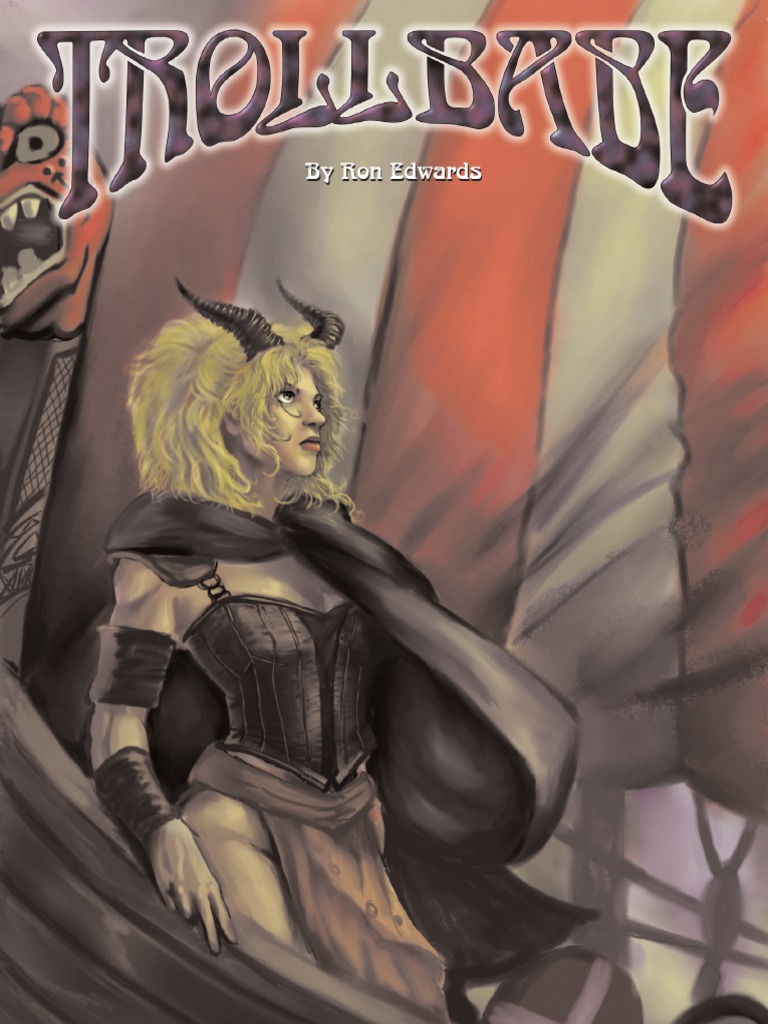I started to feel that I didn’t know roleplaying games well enough so I came up with the plan to read a roleplaying game corebook for every year they have been published. Selection criteria is whatever I find interesting.

After reading Sorcerer by Ron Edwards, I wanted to check another of his games. That’s why I read Trollbabe, published in 2002.
Trollbabe is a very clearly defined, strictly limited game with a focus on providing a classic fantasy story. The players play trollbabes, tall and tough action women. Just by being a trollbabe, the player character is a catalyst for things to start happening.
One design choice that really grabbed me was the way the stakes scale up as the game progresses. When a trollbabe comes to town, something happens. Different people want different things. For example, maybe the humans are trying to sentence a captured troll to death. Their success or failure is what’s at stake.
At the beginning of the game, the stakes concern small, individual things. As the game progresses, the stakes go up until in later sessions whole cities and realms see their fates resolved by the trollbabe.
The stakes are integrated into the dice roll mechanic. This means that the way fantasy stories tend to become increasingly epic is built into the game mechanics. That’s a simple, effective demonstration of the idea that game mechanics should produce the desired kind of narrative, an ideal that Edwards is strongly associated with.
There’s an interesting structural choice that’s present in both Trollbabe and Sorcerer. Both games seem to be ambivalent about the idea of the player characters as a group. Trollbabe suggests that the player character don’t even have to meet, instead pursuing their own adventures in different parts of the world.
Indeed, it’s not stated in the text but it feels like the optimum number of players in Trollbabe is one or two in addition to the GM.
This is a highly individualistic take on the roleplaying experience and reminds me of the way stories in passive media tend to have one or two protagonists. In contrast, roleplaying games and larp work with groups and communities.
When we talk about the stories in passive media, the word protagonist refers to main characters who engage in dynamic action which pushes the story along. In Lord of the Rings, Frodo is a protagonist. He moves, the story moves.
Trollbabe models this kind of protagonist, understood as an individual. However, underneath the concept of the protagonist is another idea, agency. Typically in stories protagonists have a lot of agency, though not always. In a roleplaying game, agency is the thing that makes it possible for players to do anything.
Stripped of the context of stories and narratives, agency is the design quality which makes participatory design work.
Although the characters in Trollbabe are described using the terminology of stories, they are designed to have a ton of agency. Every scene and situation is conceived in terms of the trollbabe. Structurally, it’s hard to have something happen that’s not defined by her agency.
One thought on “A Game Per Year: Trollbabe (Bonus 2002)”
Comments are closed.